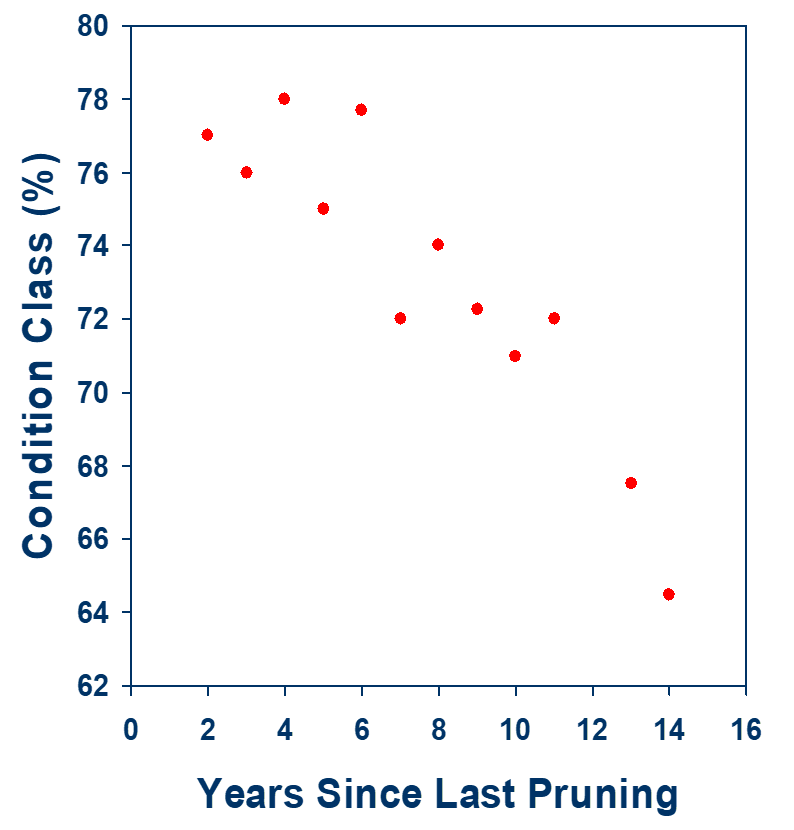
When it comes to canopy cover, energy savings, carbon sequestration, and other ecosystem services derived from canopy cover, size matters.
A healthy 50-year-old sugar maple will sequester 120 times the annual amount of carbon of a 10-year-old tree. Tree crowns start to have an impact on cooling as they begin to fill out, between 15 and 20 years of age. Therefore, planting trees will not change canopy cover benefits for two to three decades. Consequently, a tree planted in 2020 will have little or no impact on the canopy until 2040 or 2050.

The trees that we plant along our streets and in backyards are not designed to grow in a light plentiful environment. This is because the skills they developed competing for sunlight in a natural forest do not serve them in our yards and on our streets. Without proper pruning and maintenance, in an urban environment, trees are prone to splitting apart and failing long before they reach 30 years old. Without proper maintenance, the trees planted this year will never have an impact on the canopy.

The single most important objective to increase the canopy in urban forests is to extend the functioning life of the trees. Routine pruning (training) of young trees for the first ten years of life has shown to be the most cost-effective and beneficial activity that can be performed in the urban forest to extend the life of a tree. Research has shown that routine pruning of mature trees once every five years will significantly improve their value and longevity. Good pruning can also reduce damage and cleanup costs after storms. Trees should be pruned by trained professionals two years after planting and again in years 4, 6, 8,10,15, 20, 25…
If you want canopy, you need maintenance.
Prepared by: Alan Siewert, Urban Forester ODNR Division of Forestry
“The Large Tree Argument” is an excellent resource on the value of large urban trees.
